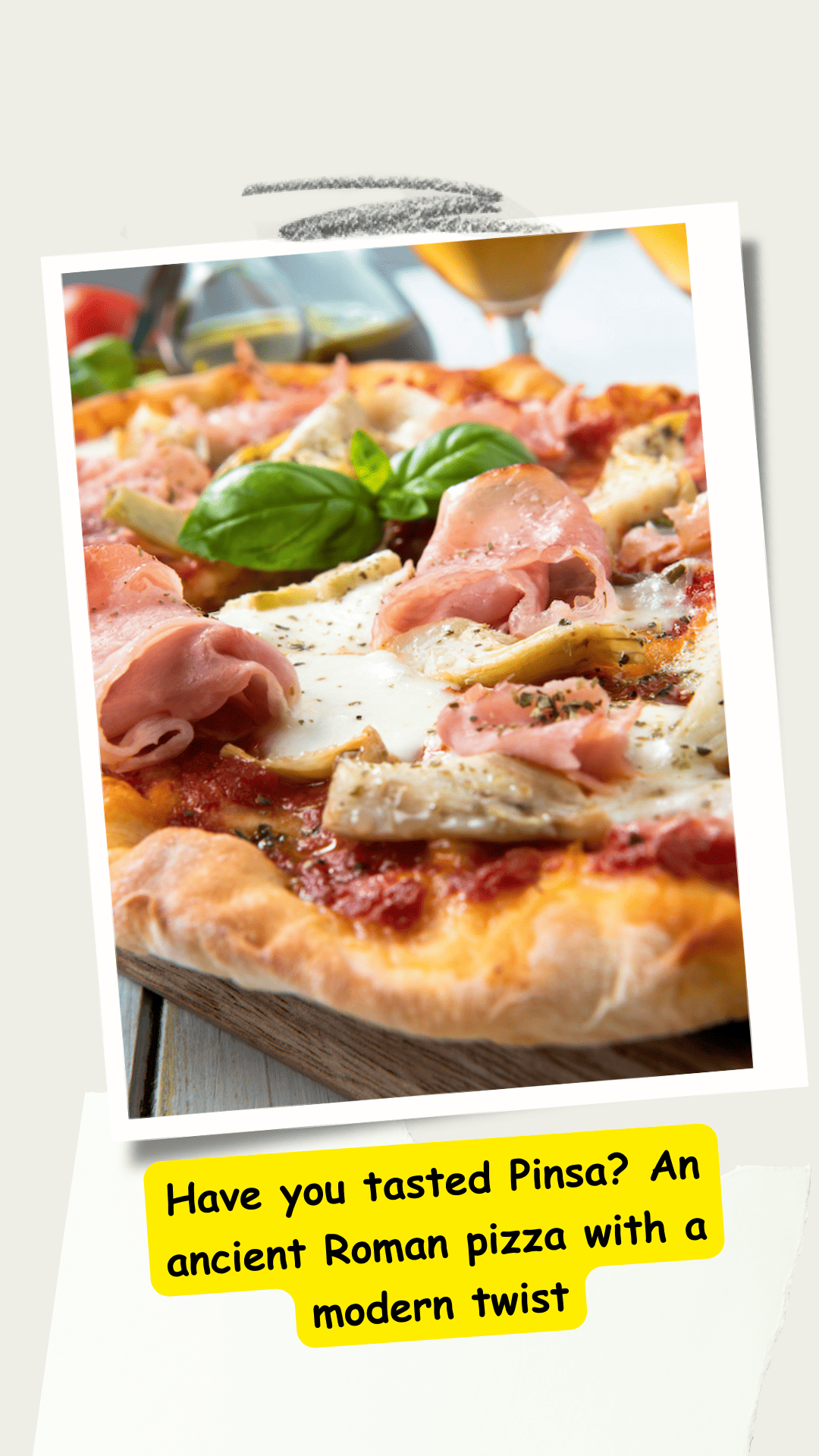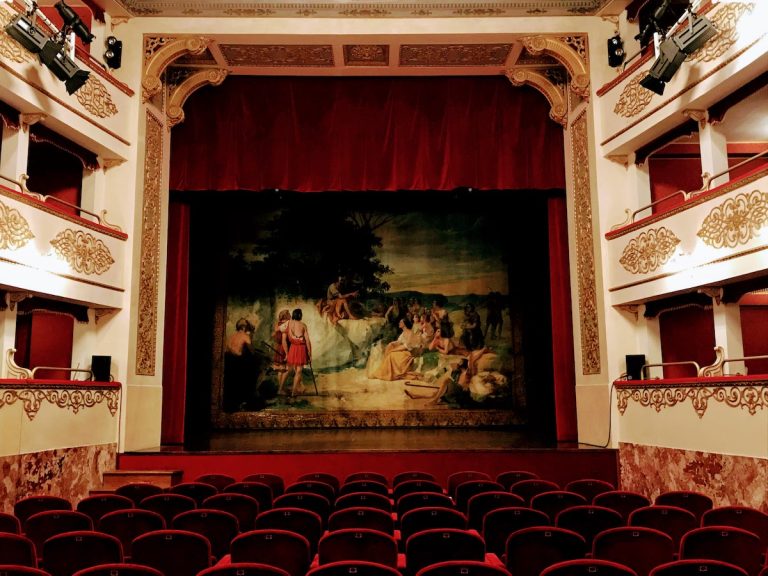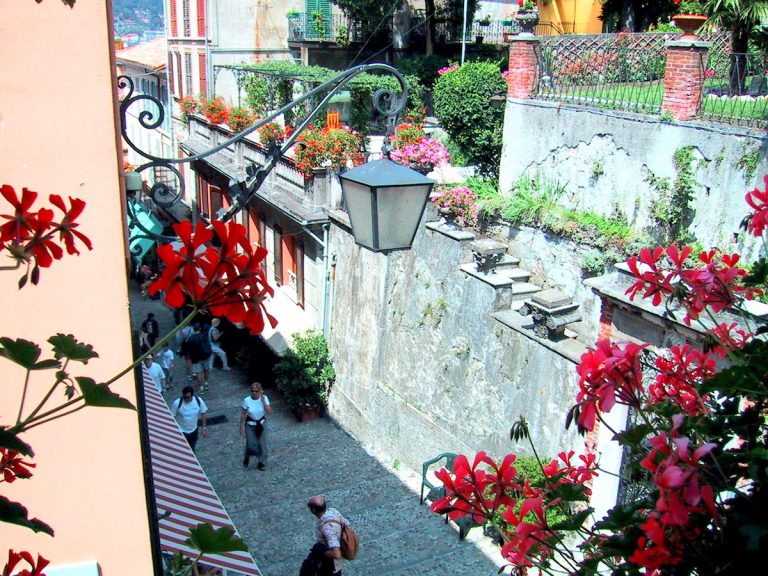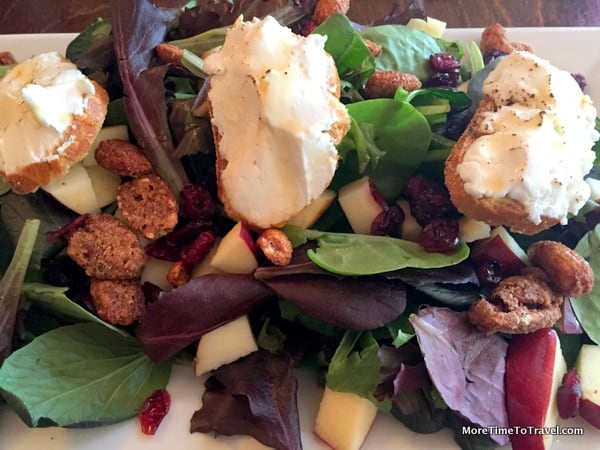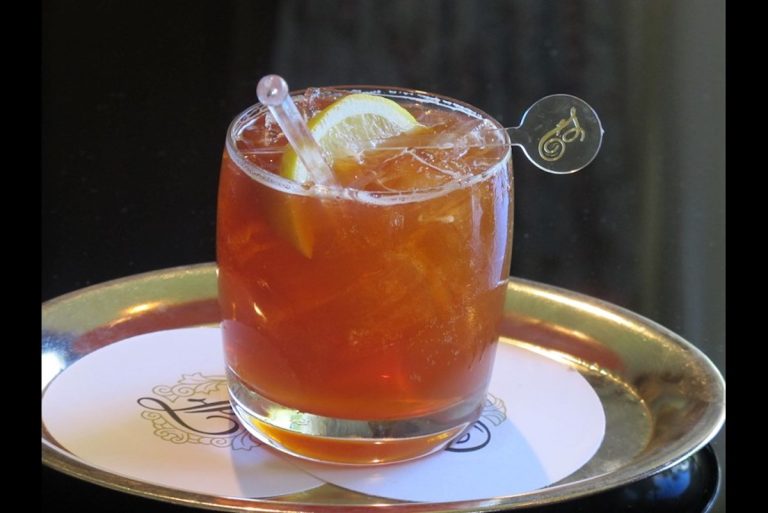Pinsa: A Modern Revival of An Old Roman Culinary Tradition
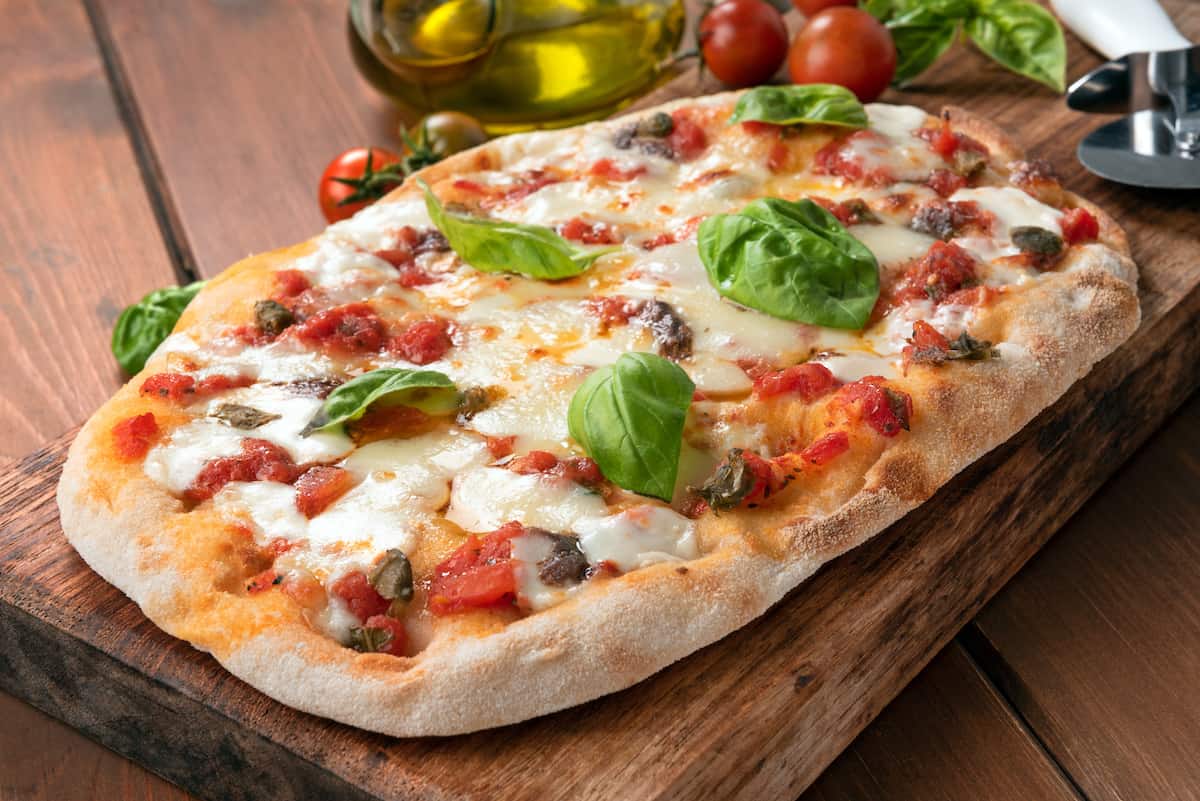
Pinsa was on the menu when we visited Da Tino e Marco, a small family-run restaurant beside a hotel in Laigueglia, a seaside resort in Liguria.
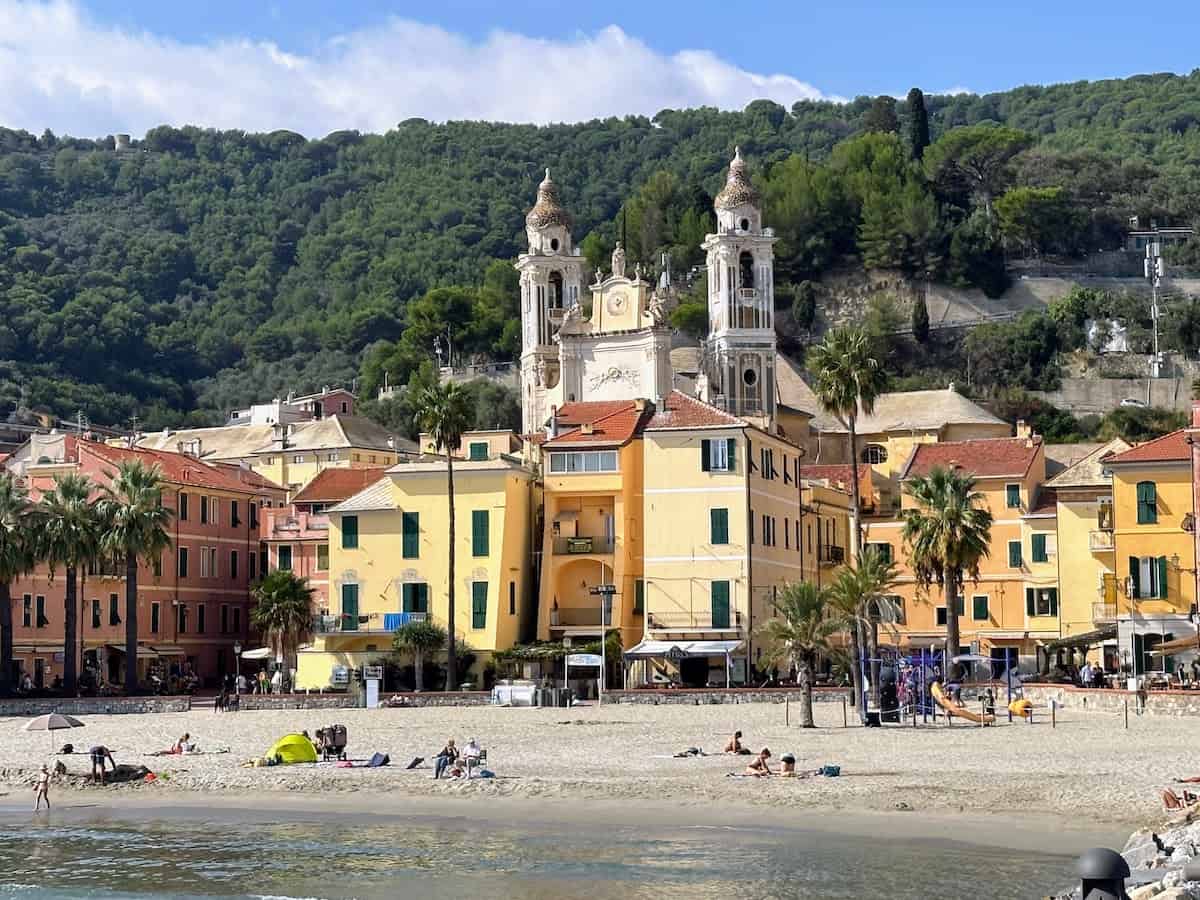
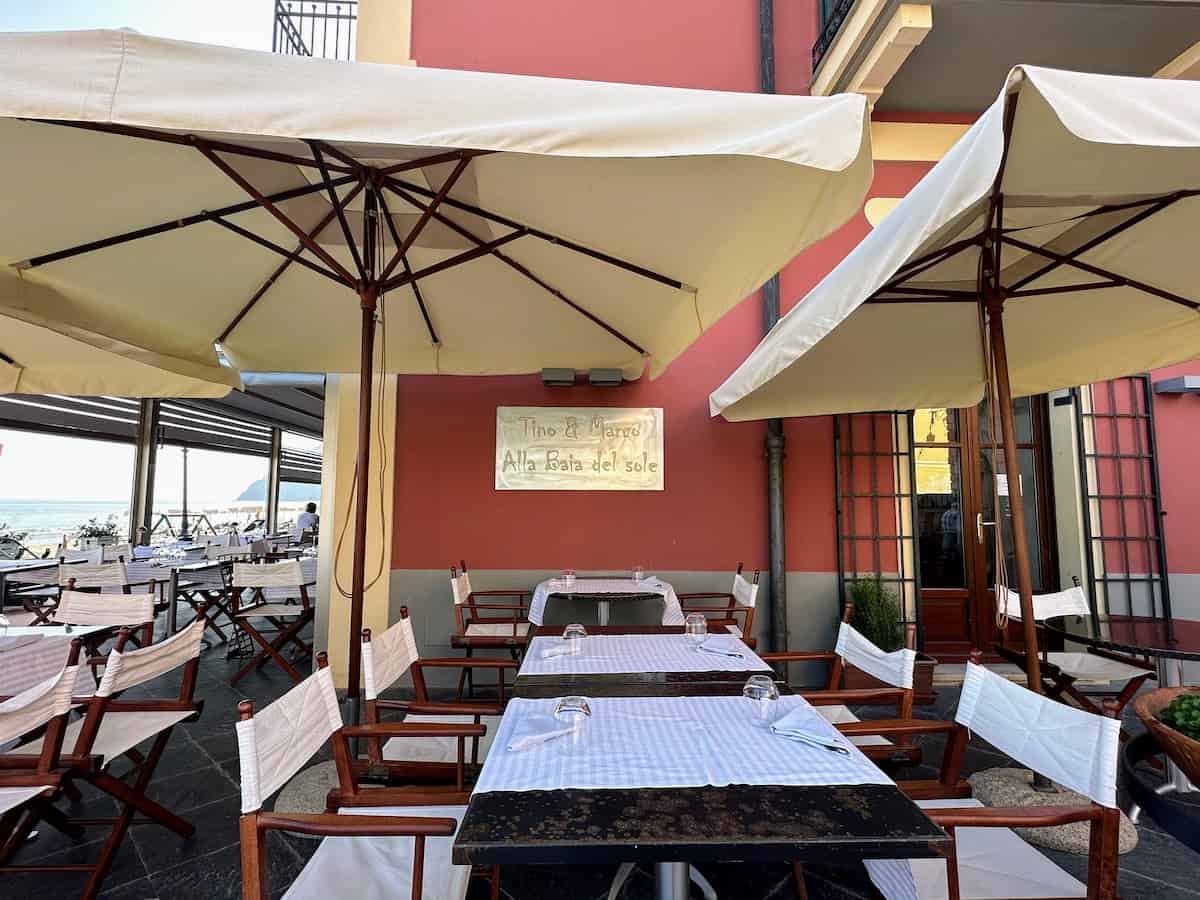
I fell in love with it at first bite. It might have been the setting…
But, admittedly, I’m one of those inveterate pizza lovers who could eat pizza for lunch or dinner several times a week—if my waistline would allow.
But before that lunch, I had never heard of or tasted pinsa, which I later learned is the ancestral granddaddy of pizza.
What is pinsa?
Pinsa is a Roman flatbread with a light, airy crust that is often topped off with many of the same toppings you would find on pizza.
What are the differences between pinsa and pizza?
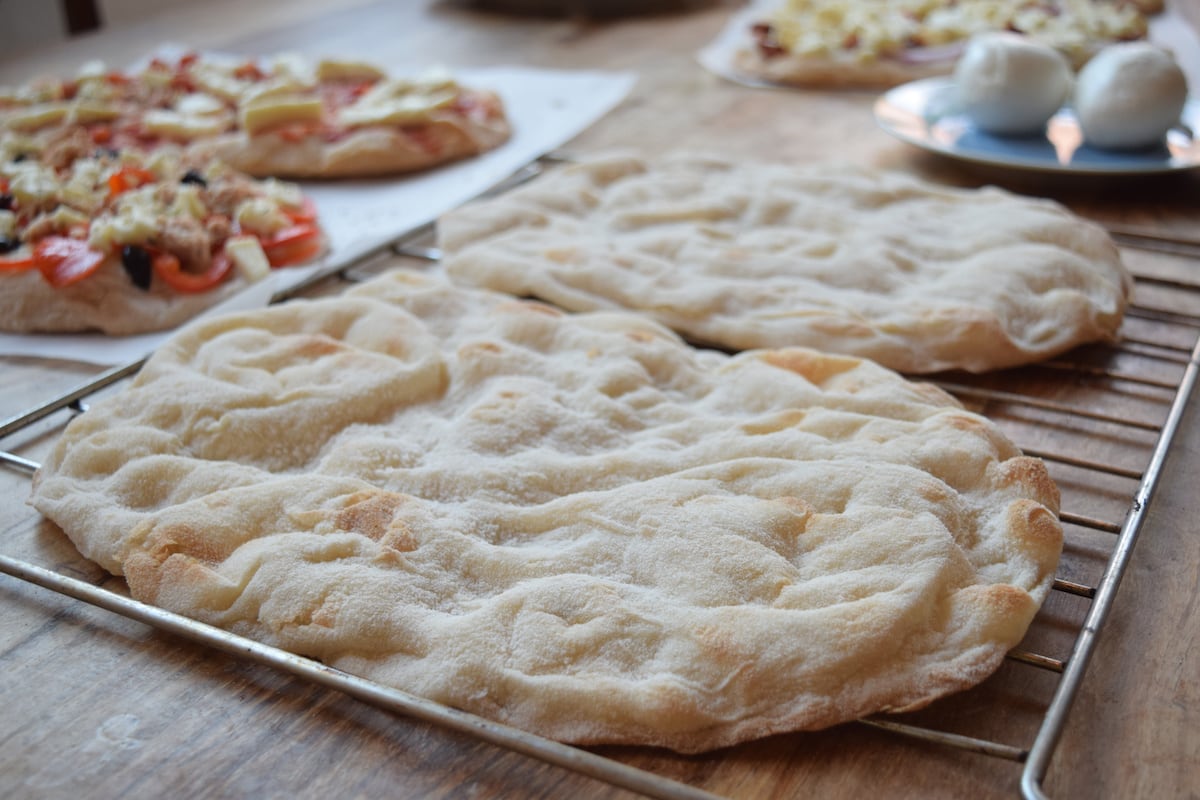
The major differences are in the dough and shape.
Dough
Pinsa dough is made from a mix of wheat, soy, and rice flour, while traditional pizza dough is made from all-purpose or wheat flour.
The different ingredients, greater dough hydration (75-80% of the weight of the flour), and lengthier fermentation process of the dough are thought to have benefits. It is easier to digest, more nutritious, and less caloric (although it depends on what you put on top of each).
The other ingredients used for both are the same: water, yeast, salt, and olive oil.
The texture of hand-pressed pinsa dough tends to be softer in the center and crispier on the outside than pizza. Some describe it as cloud-like because of its air pockets.
Shape
In terms of shape, pizza tends to be round (hence, we call it a pizza pie), especially in the U.S.
Other common pizza shapes are rectangular (called pizza al taglio) that is baked in a rectangular pan) or square (Sicilian-style pizza). Pinsa is typically oval, almost like the shape of a flattened French batard.
Toppings
One other difference: Toppings are used on both pinsa and pizza, but one might say that pizza dough is a vehicle for its toppings, while the unique taste and texture of pinsa dough, with its lighter crust, is its main appeal.
Toppings on pinsa generally tend to be simpler, using more seasonal ingredients as compared to conventional pizza toppings. (You’re unlikely to find Hawaiian pinsa on any menu.)
What is the short history of pinsa?
The preparation of pinsa dates back to ancient Rome. Its name is derived from the Latin term “pinsere,” which means to press or flatten with one’s hands.
Considered a staple in ancient Rome, one legend suggests that it was so delicious cooked over hot coals that ancient priests offered it to the gods.
The pinsa revival
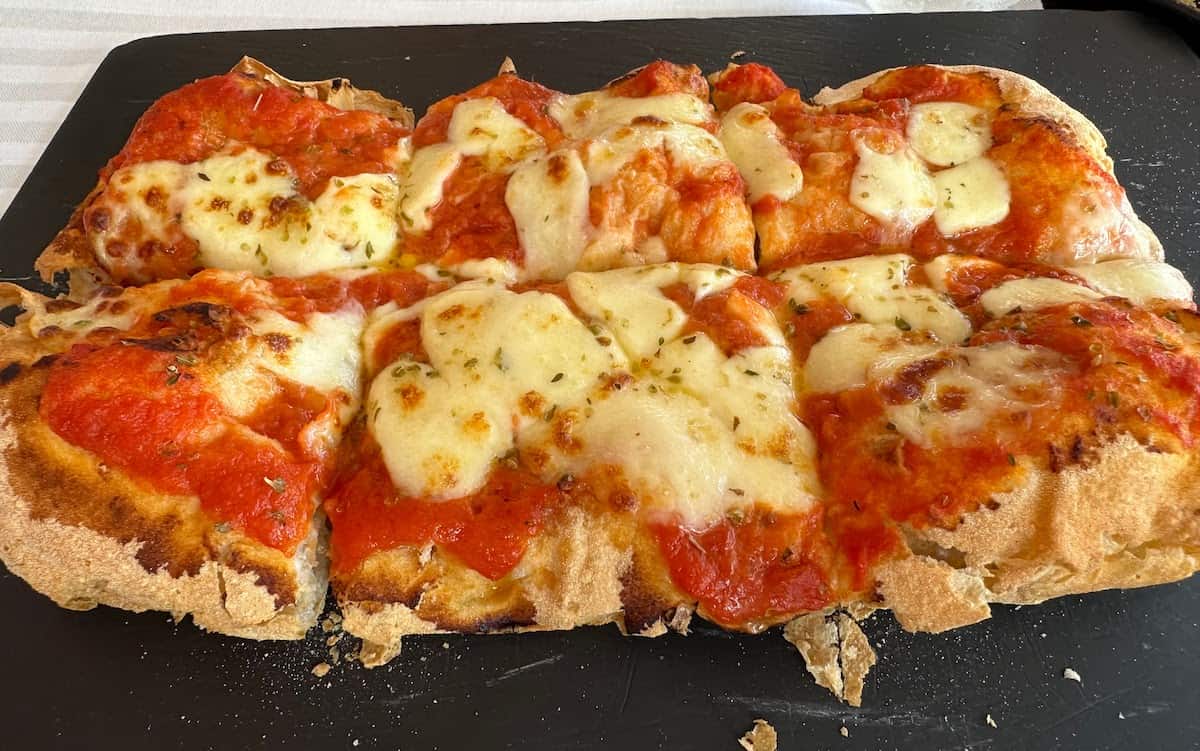
In the early 2000s, chefs and food enthusiasts began to rediscover ancient culinary traditions and appreciate the authenticity of once-forgotten regional dishes. With that, there was a resurgence of interest in pinsa.
Whereas pizza had once dominated modern appetites (like mine), more restaurants and pizzerias began to feature the Roman flatbread on their menus.
A 2020 article in the Wall Street Journal announced the mass migration of pinsa from Rome to New York and other cities in the U.S., calling it the “new pie” in town, although acknowledging that it bears some similarities with the flatbread pizza on many menus.
I must have been under a rock!
Where to find pinsa close to home
Rome and the Lazio region still remain the epicenter, although you may find this Roman-style pizza in some other regions of Italy, especially in the south. I was fortunate to taste it in Liguria, in northwestern Italy.
If you are looking for pinsa closer to home, you will likely have to do an Internet search (as I did). Google “pinsa” and “the name of your city or town.”
I discovered one restaurant a short driving distance from my home, Papi in White Plains, New York, that specializes in Italian street food, including pinsa.
Mini-review of Papi in White Plains, New York
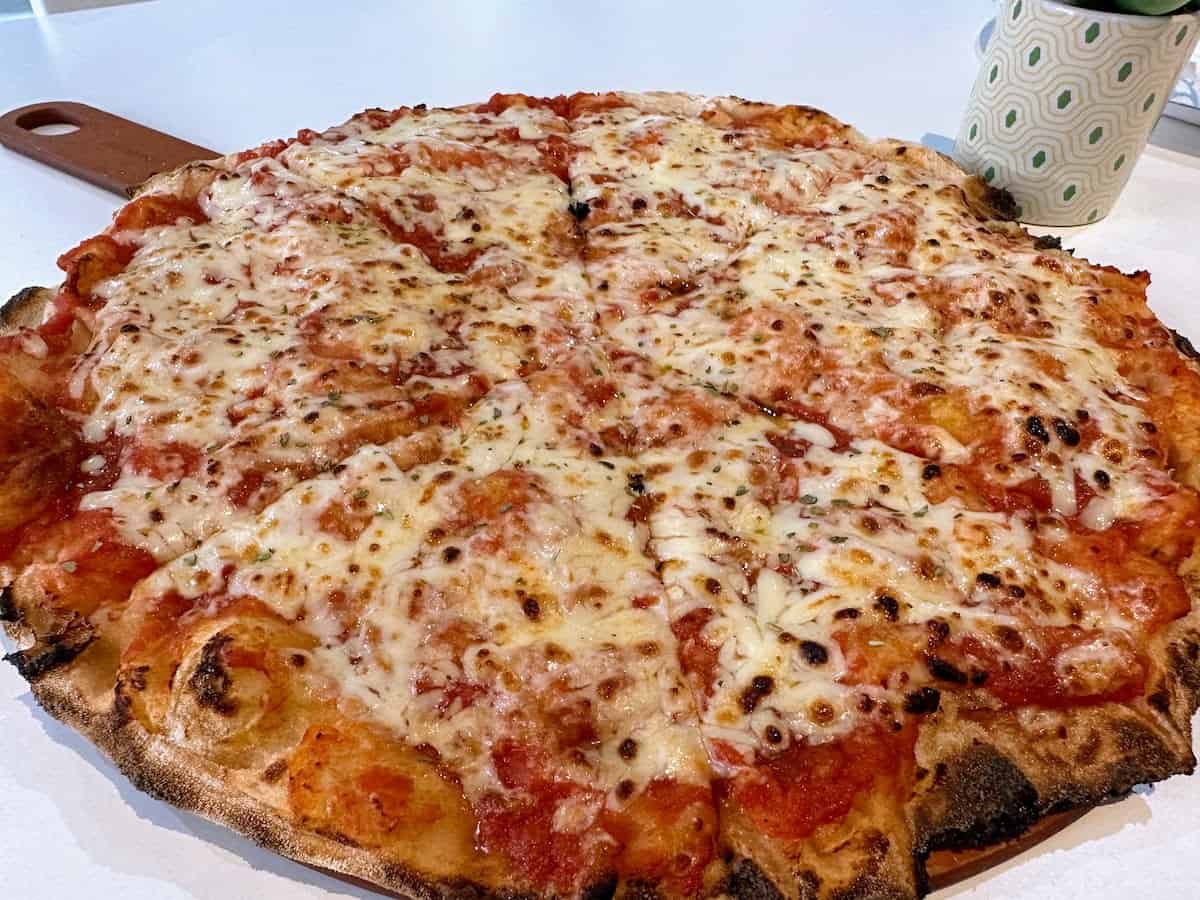
As you might expect, soon after our return home, I made a beeline to Papi in White Plains to try a New York version of pinsa, which was a major disappointment.
The round (rather than oval) shape of the pinsa was a dead giveaway that it wasn’t the real thing, but the speed at which it came out of the kitchen provided further evidence that it might have been made with frozen, pre-baked dough. (
Admittedly, the restaurant billed itself as serving fast-food Italian.
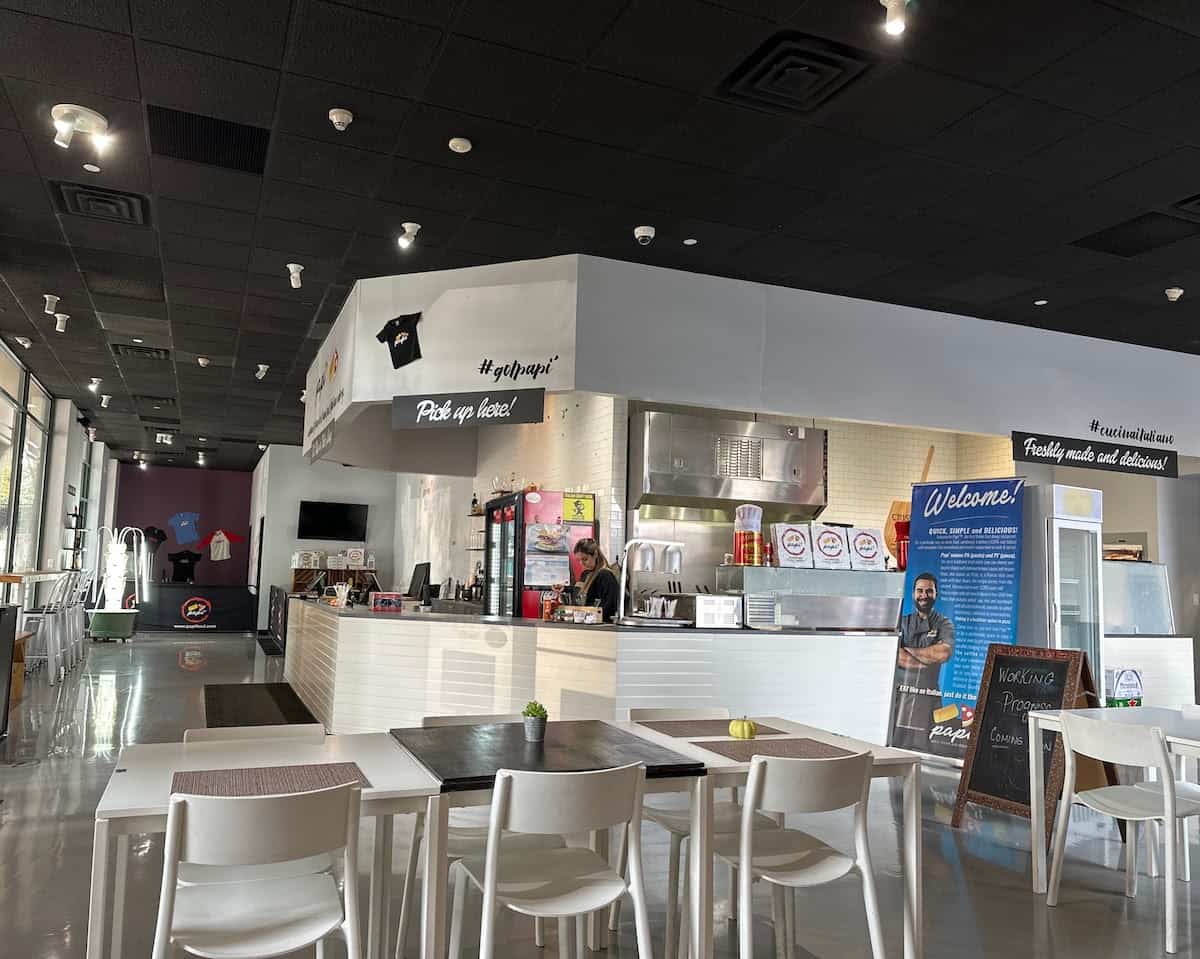
The dough’s ingredients were somewhat similar to that of the pinsa we had tasted in Italy, but had an addition of sourdough.
Unfortunately, the toppings lacked the freshness of those in Laigueglia, but that wasn’t a big surprise. Tomatoes and cheese almost always taste better in Italy.
Sadly, the biggest similarity between eating Italian and American versions of pinsa was the difficulty finding a parking place!
Of course, the odds of finding a more authentic version close to home are greater if you live in a large city with trendy restaurants (like New York, Chicago, or San Francisco, among others).
But you can also discover this ancient treat on the menus of some pizzerias and Italian restaurants specializing in regional Roman cooking.
Is it worth a trip to Rome?
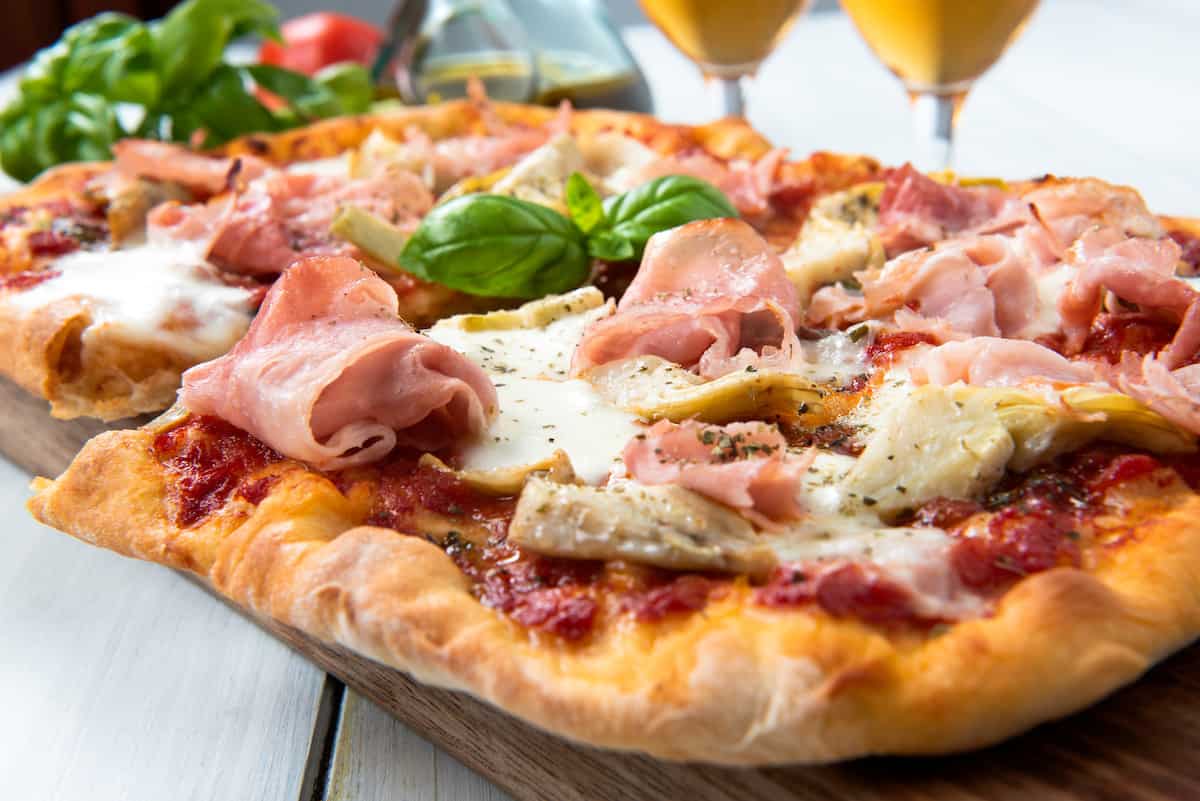
The short answer is yes, if you like pizza, it’s worth a trip to Rome where you might even find pinseria restaurants.
I may have been late to the game, and my route may have been circuitous, but I’m glad to add this Italian specialty to my culinary repertoire.
Have you tasted pinsa? If so, where?
How to make Pinsa: On YouTube
Save to Pinterest!!
